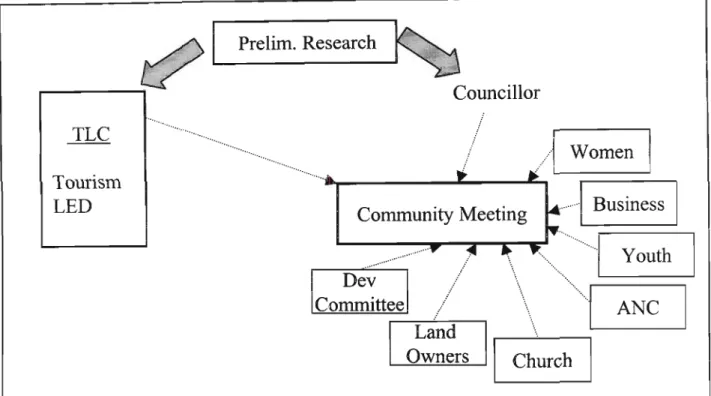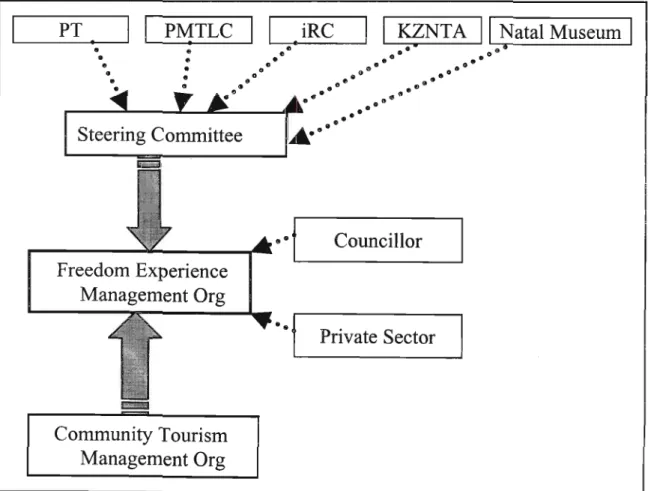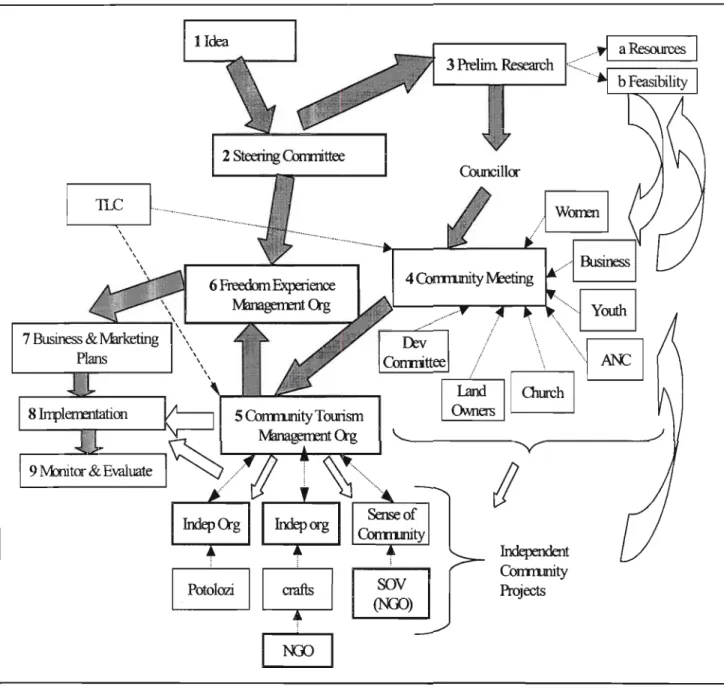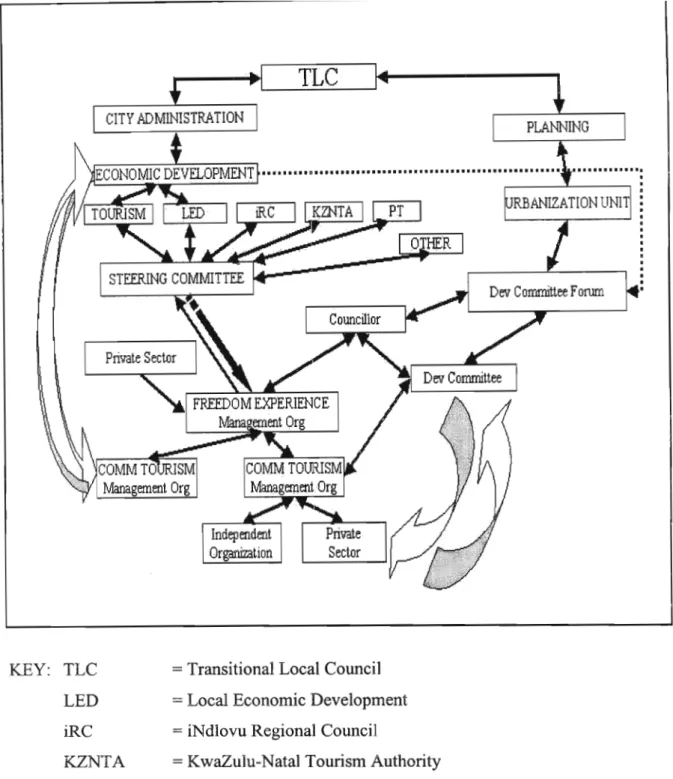Mostly the emphasis on involving local communities in tourism development is rural based. Difficulties and opportunities are identified for community-based urban tourism development in general, and for the case study area in particular.
RESEARCH PROBLEM
KwaZulu-Natal, to illustrate how community participation in tourism development has occurred in other previously disadvantaged areas. Furthermore, it is intended to provide input into the implementation process, as facilitating community participation, as indicated above, is an integral consideration in any tourism development initiative.
AIM AND OBJECTIVES
THE FREEDOM EXPERIENCE AND THE CASE STUDY AREA
METHODS
No tours of Pietermaritzburg's previously neglected urban or peri-urban areas were identified, therefore interviews were conducted with relevant Durban-based operators. They were chosen because they offered tours of previously neglected urban and suburban areas within the Durban metropolitan area.
LIMITATIONS OF STUDY
These tour operators were identified through newspaper articles, advertising and tourism organizations and word of mouth. Although Pietermaritzburg will have its own idiosyncratic characteristics, it was felt that the experience of Durban's tour operators would provide an insight into the difficulties of such an enterprise.
STRUCTURE OF THE DISSERTATION
CHAPTER TWO
TOURISM
CONCEPTUALISING THE NOTION OF TOURISM
- Mass Tourism
- Towards a 'New Tourism'
- Urban Tourism
Section 2.2 will show that this 'new' tourism is the form supported by government policy, and which I will elaborate on in the specific Georgetown context. Cultural or heritage tourism is seen as a growth sector in the tourism industry (Seymour, 1998, pers. comm.), and this suggests significant opportunities and potential impacts for previously neglected urban and suburban areas of cultural and historical value in the developing world. meaning, such as the case study area.
TOURISM TRENDS AND DEVELOPMENT
- Foreign Tourism in South Africa and KwaZulu-Natal
- Domestic Tourism Trends and KwaZulu-Natal
- Tourism and Urban Development
Its relevance to urban tourism development in the context of this study is for emphasizing socio-economic development through community participation, while conserving existing resources. A'Bear (1998) identifies two documents that specifically influence tourism policy for KwaZulu-Natal, the White Paper at the national level, and the Tourism Policy and Strategic Framework for tourism development in KwaZulu-Natal at the provincial level.
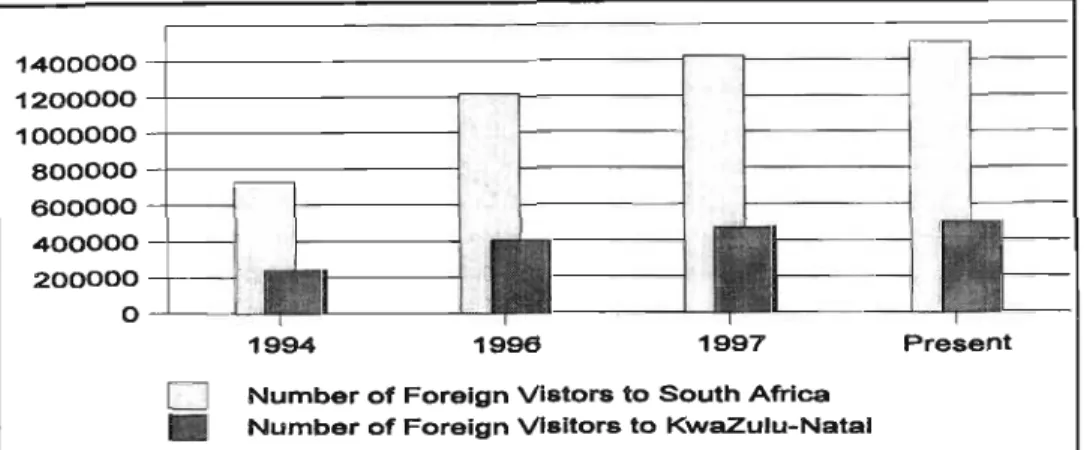
COMMUNITY PARTICIPATION IN TOURISM
- Meaningful Participation
- Planning for Meaningful Participation
- Inanda
- Cato Manor
However, this does not seem to be the case, which is seen in the growing demand for community participation in tourism and other areas of planning (Getz & Jamal, 1994). This may be more difficult in the urban context as the concept of community is much larger (Seymour, 1999, pers. comm.). Equality in participation is defined as ".the degree to which all possible opinions are heard (p.99)".
It has been noted that they therefore adopt a 'wait and see' approach (Ntuli, 1999, pers. comm.), meaning that they are usually not heavily involved in the planning stages of CBT initiatives. To date, NGO involvement in the Freedom Experience initiative has been conspicuously absent. F.) Affected community and Community Based Organizations (CBOs). As a result of work in the Inanda area, a social anthropologist began to explore the area's potential to develop an urban/peri-urban community tourism project (Seymour, 1999, pers. comm.).
Since then, a Section 21 company has been registered, a tourism development plan has been completed and the directors of the Section 21 company are currently being appointed (Ntuli, 1999, pers. comm.). An introduction has been given to some of the changes and trends occurring in the tourism industry. There are two broad ways in which government can become involved in encouraging tourism development in previously neglected urban areas.
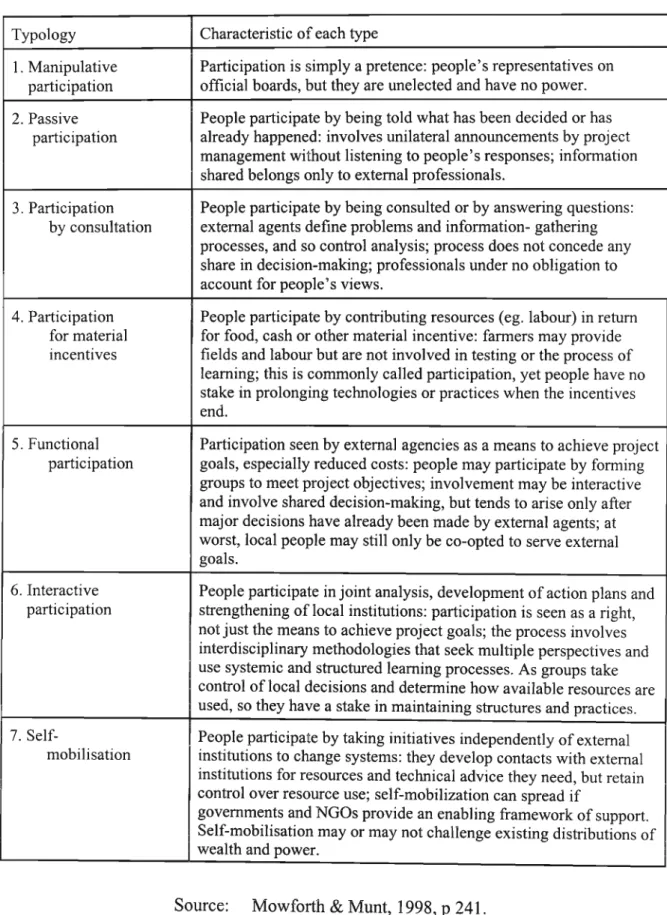
CHAPTER THREE
CASE STUDY
GEORGETOWN AND THE FREEDOM EXPERIENCE
THE FREEDOM EXPERIENCE, PIETERMARITZBURG
- The Proposed Tourism Initiative
- Pietermaritzburg as a tourist destination
- Process to Date and Involvement of Role-players
It has been stated that the Freedom Experience will include tours of previously neglected areas (Kerr, 1999, personal communication). The phases of the project were first identified as the research phase (currently underway), the development phase (in which the community is expected to be involved) and finally the marketing launch (Kerr, 1999, personal communication). . This means that these tourists were not really vacationers in the true sense of the word (Seymour, 1999, personal communication) and are therefore not a good indicator of tourism success.
Pietermaritzburg Tourism (PT) is the facilitating body responsible for driving this project forward (Kerr, 1999, pers. comm.). The project has been stalled for a long time in the past and now seems to be caught up in institutional debate focusing on issues of funding and research coordination (Londt, 2000, pers. comm.).1 It has been expressed that no one person has grasped this project with enthusiasm to successfully drive it forward (Londt, 2000, pers. comm.). It has been proposed that a trust be established to administer funds and direct the route development of the Freedom Experience (Kerr, 2000, pers. comm.).
A funding acquisition agent was approached to obtain funding via external sources (Kerr, 2000, pers. comm.).
GEORGETOWN
- The area
- A Concise History of Georgetown
- Specific Difficulties
This ward is located in the South West sector of the Msundusi-Pietermaritzburg Transitional Local Council. The socio-political dynamics of Ward 22 are addressed later in the section on community dynamics. Local government also invites the councilor to any meetings in which development in the ward he represents is discussed (Haswell, 2000, pers. comm.).
Voortrekker, Pietermaritzburg was founded by Voortrekkers in the late 1830s, and buildings such as the Geloftekerk and Voortrekker House are monuments to this era. The private sector is often seen as appearing in the form of big business or big tourism development. External private sector organisations, if they do become involved, will almost certainly come in the form of independent tour operators offering guided tours of the tourism product.
Another obstacle to meaningful community participation is the political discomfort of many of these previously neglected communities (Kerr, 1999, pers. comm.).
SYNTHESIS
CHAPTER FOUR
REFLECTIONS ON IMPLEMENTING URBAN TOURISM
PRESENTING AN INTEGRATIVE PROCESS
It should also be kept in mind that several development-oriented projects will already be underway, and some of them may be relevant and linked to tourism development. The following suggestions can hopefully be used for the benefit of planners, both at government and community levels, by bringing these individual projects under the wing of a broader tourism initiative. This could allow for the creation of a vibrant interactive product that connects different areas within the city or region, while contributing to community development. It offers the opportunity to connect LED lighting and tourism development in a way that will hopefully benefit it.
Given the history of the Freedom Experience, the current process, although driven by the motive of including previously neglected communities in tourism development, has a top-down bias. The following figures and explanations of the proposed process should be understood in this light. Although the conceptual idea for the Freedom Experience was generated externally from the Georgetown community, there are likely to be many current community projects and latent ideas that could provide opportunities for retrospective integration.
The idea has not yet given rise to any specific tourism product at this stage, although the general idea behind the Freedom Experience seems to have been agreed upon at a steering committee level.
Establishment of a steering committee
Without an understanding of the different social dynamics present in an area, especially regarding the distribution of power, interaction at the community level can be futile. In addition to the need for detailed resource research, it seems important that there is an understanding of the socio-political characteristics of the proposed areas. This study would examine the viability of the project in many areas, identifying fundamental constraints and opportunities. It should include a preliminary market analysis.
The feasibility study must not only look at economic sustainability, but also at possible benefits that can be expected as a result of the whole project. The number of CBOs and the fragmented nature of society can potentially lead to an unmanageable situation. Although the composition of the meeting must be representative of all affected communities, it must weigh representativeness against efficiency.
It would be helpful if a representative of the TLC, preferably someone from the Tourism Department or LED, attended this meeting, to explain the tourism initiative and the objectives of the meeting, Figure 4.3.

1 ANC I
- Establish a Community Tourism Management Organization (CTMO)
- Establish Freedom Experience Management Organization(FEMO)
- Implementation
- Monitor and evaluate (assist with any difficulties, facilitate and mediate)
- AN INTEGRATIVE VIEW OF COMMUNICATION
The Community Tourism Management Organization (CTMO) can in turn be there to advise and assist the community. In certain cases, knowledge or advice, through initial contact via the community tourism organisation, may flow directly from the TLC to an independent community project. Together with the community, the interpretation process for the exhibition could be completed. This can happen, as in the case of the 'Potolozi' project, which the community makes.
As the arrows in Figure 4.6 indicate, implementation can occur from the independent organization level, the community tourism management level, or the Freedom Experience management level. Implementation can be stimulated by the community meeting or by one of the existing community organizations. Communication channels between the local government and the community should continue to exist and be improved, through FEMO and CTMO.
Community development communication is currently channeled from the local government level, through the Urbanization Unit, through the relevant Development Committees, back to the community level.
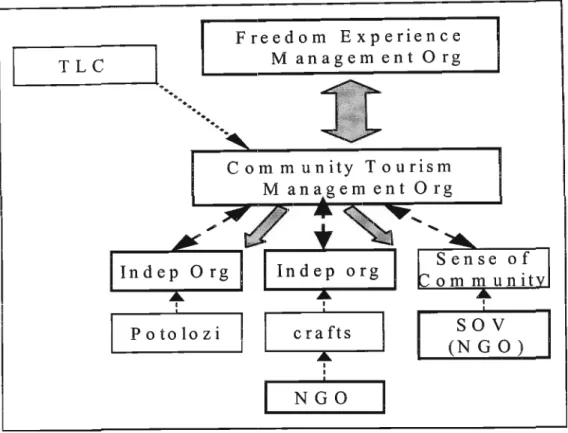
CHAPTER FIVE
CONCLUSION
Community governance, increased decision-making power and tangible benefits will hopefully lead to a greater sense of ownership in tourism-related projects and the wider tourism initiative. This in turn should lead to a greater positive regard for both tourism and tourists. The probability for success of a broad tourism initiative is therefore improved by increasing the opportunities of independent project and business sustainability, and by improving the hospitality atmosphere of residents.
In this way, it is envisaged that communities will benefit through a process of meaningful participation, regardless of the eventual outcome of the proposed tourism initiative. The success of the tourism venture, however, will become more likely due to increased community support. The proposed development process of tourism, which emphasizes the mutual responsibility of local authorities and residents, can contribute to the realization of the goals of both parties.
Local government can increase its regional appeal as a tourist destination by diversifying its product offering while contributing to the goal of local economic development.
A paper presented at the N.B.I.l. Government Initiative Tourism Development Workshop, Natal, 26 August Heritage Sites, Recreation and Tourism. Paper prepared for the launch of Action Southern Africa's people-first tourism campaign, on 5 July 1997. -Natal Province (1997) Local Agenda 21 Information Package. Information package for the KwaZulu-Natal Local Agenda 21 Conference held by the provincial Management Committee, on 26 June Urban Tourism and its contribution to economic regeneration.
Unpublished paper submitted in partial fulfillment of the academic requirements for the Geography Honors degree, University of Natal, Pietermaritzburg. A study of the architectural styles of the old houses in Georgetown (Edendale) with a view to making recommendations for the preservation and renovation of some of the houses of historical importance. Unpublished study conducted for the National Monuments Council, July Tourism and Sustainability: New tourism in the Third World.
Eds), Tourism, Development and Growth: The challenge of sustainability, pp Sustainable Tourism in the Developing World.

